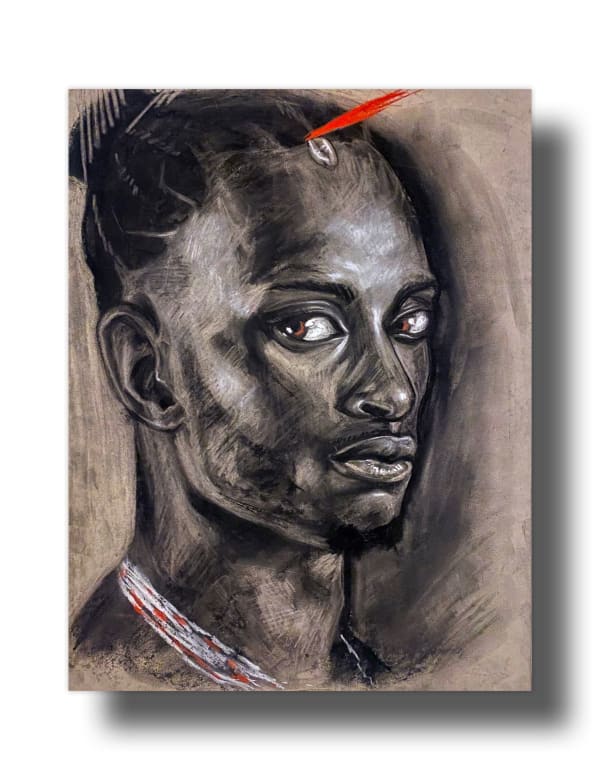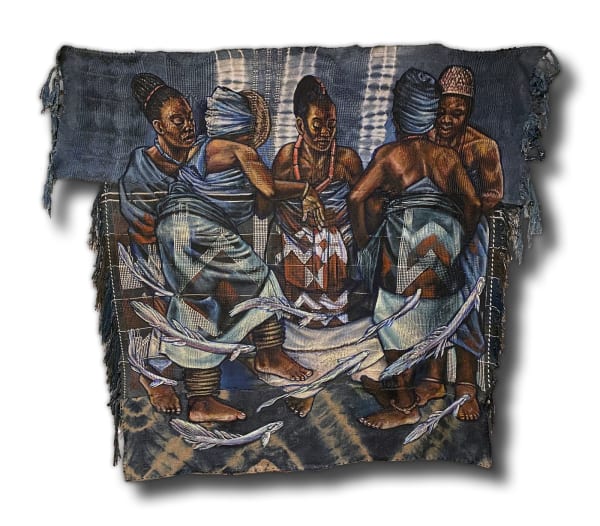We are pleased to announce a solo exhibition by Boston artist Stephen Hamilton on view from November 18th to December 31st, 2022 with text by Kyrah Malika Daniels, Ph.D. Assistant Professor of African American Studies, Emory University. Artist Reception will be held on Friday December 2nd from 5:00 pm to 8:00pm and an Artist Talk on Saturday December 10th from 2:00pm to 3:00pm. This is the artist's first solo exhibition with our gallery.
“Passages” is a visual exploration of life transitions and the liminal spaces between the physical and spiritual worlds. This series examines the movement between adolescence and adulthood, adulthood and elderhood, as well as life, death, and rebirth in African and African-American folklore and philosophy. Cloth is central to crucial moments of passage in West and West-Central Africa. Cloth, dye, and fiber are materials demarcating the sacredness of these moments of transition. For this reason, each work incorporates handmade textiles juxtaposed against figurative painting. This body of work heavily draws from African and African - American concepts of reincarnation, transition and ritual Referencing key symbols rooted in ancient African cosmology, sacred writing, and material culture.
Stephen Hamilton (b.1987) is an artist and arts educator living and working in Boston, Massachusetts. Born and raised in Roxbury, Stephen graduated from Massachusetts College of Art and design in 2009 with a focus in illustration.
Stephen’s Work incorporates both Western and African techniques, blending figurative painting and drawing with resist dyeing, weaving, and woodcarving. Each image is a marriage between the aesthetic perspectives and artistry of both traditions. As a Black American trained in traditional west African artforms, he treats the acts of weaving, dyeing, and woodcarving as ritualized acts of reclamation. he uses traditional techniques and materials native to West Africa to reclaim ancestral knowledge dissociated from Africans in the Americas, during the transatlantic slave trade. The work explores and heavily references the Black body in pre-colonial African art history, creating visual connections between the past and the present. This forms a body of work, which serves as a conceptual and visual bridge between the ancient and modern worlds. Through this, he explores elements of black identity through time and space on its own terms.
Through visual comparison of shared philosophies and aesthetics amongst Black peoples, he seeks to describe a complex and varied Black aesthetic. These visual and philosophical connections and cultural analyses form his visual language. The pieces created depict African thought and culture as equal to, yet unique from, its western analog. This work stands in stark contrast to the pervasive negative associations, which have become synonymous with Black culture. his work, therefore, bridges dialogue between contemporary Black cultures and the ancient African world through an asset-based lens.


















